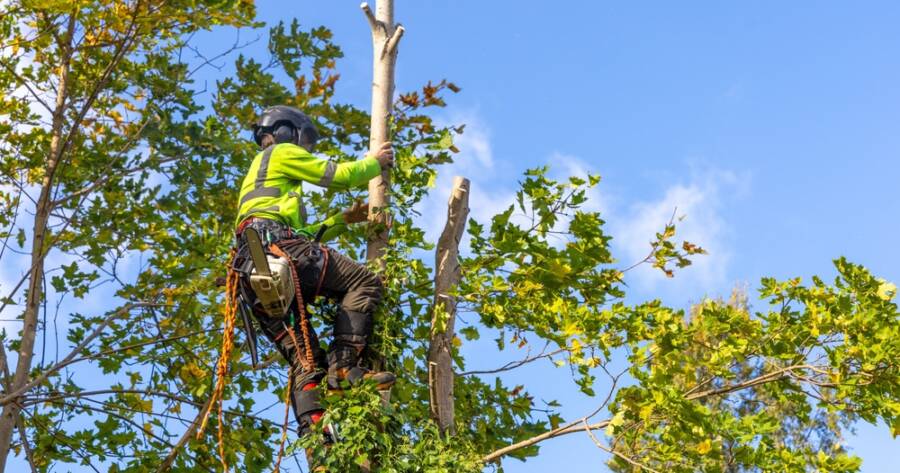Trees add value to properties, but removal is sometimes necessary due to disease, damage, or safety concerns. Professional tree removal services ensure safe, efficient work with minimal property impact. Learn when such a service is needed, the potential processes involved, and how to choose the right provider for your property.
When Is Tree Removal Necessary?
Tree removal is often a last resort, but certain situations make it unavoidable:
- Dead or dying trees: Dead trees pose a significant risk as they can easily fall, causing damage or injury. If a tree shows signs of severe disease or decay and cannot be saved, removal is necessary.
- Storm damage: Trees damaged by storms, with broken branches or split trunks, may need removal if they pose a safety hazard or are beyond repair.
- Obstruction or overgrowth: Trees that have grown too close to power lines, buildings, or other structures can be a safety concern. Overgrown roots can damage foundations, driveways, or underground utilities.
- Landscaping or renovation projects: Sometimes, trees need to be removed to make way for new construction, landscaping, or to improve the overall aesthetics of a property.
- Hazardous leaning: A tree that is leaning significantly, especially if it’s toward a structure or a high-traffic area, may need to be removed to prevent accidents.
The Tree Removal Process
Tree removal involves more than just cutting down a tree. Here’s a step-by-step overview of what you can expect:
- Assessment: A professional tree removal service will assess the tree and the surrounding area. This includes checking the tree’s health, size, location, and proximity to buildings or power lines. They will also evaluate potential risks and determine the best approach for removal.
- Permitting: In some areas, tree removal may require a permit, especially for large or protected trees. A reputable tree removal service can help you navigate the permitting process.
- Preparation: The area around the tree will be cleared to ensure safety. This might involve setting up barriers or redirecting traffic if the tree is near a road or pathway.
- Tree removal: Depending on the tree’s size and location, it may be removed in sections or as a whole. For larger trees, branches are often removed first to reduce weight and risk. Then, the trunk is cut down in manageable sections.
- Stump removal: After the tree is removed, you may opt to have the stump removed as well. Stump grinding is the most common method, which grinds the stump down to below ground level, allowing for replanting or landscaping over the area.
- Cleanup: A professional service will handle the cleanup, removing debris, branches, and logs. Some services offer wood chipping or recycling options, allowing you to repurpose the tree as mulch or firewood.
Choosing the Right Tree Removal Service
Selecting the right tree removal service is crucial for ensuring safety and quality. Here are some tips for making the best choice:
- Check credentials: Ensure the company is licensed, insured, and has certified arborists on staff. This protects you from liability if any accidents occur during the removal process.
- Get multiple quotes: Obtain quotes from several companies to compare prices and services offered. Be wary of significantly lower prices, as they may indicate lower quality or lack of insurance.
- Ask for references: A reputable company should have positive reviews or be willing to provide references from past clients. Check online reviews or ask friends and neighbors for recommendations.
- Inquire about equipment: The company should use modern, well-maintained equipment to ensure a safe and efficient removal process.
- Understand the scope of work: Make sure you know exactly what is included in the service—tree removal, stump grinding, debris removal—and whether there are additional costs for these services.
Safely Removing Trees with Expert Help
Tree removal is a complex task that requires professional expertise and equipment. Whether due to safety concerns, property improvements, or storm damage, knowing when and how to remove a tree is crucial.
By choosing a reputable tree removal service, you can ensure the job is done safely, efficiently, and with minimal disruption to your property. Always take the time to assess your options, check credentials, and understand the full scope of the service to make the best decision for your tree removal needs.
